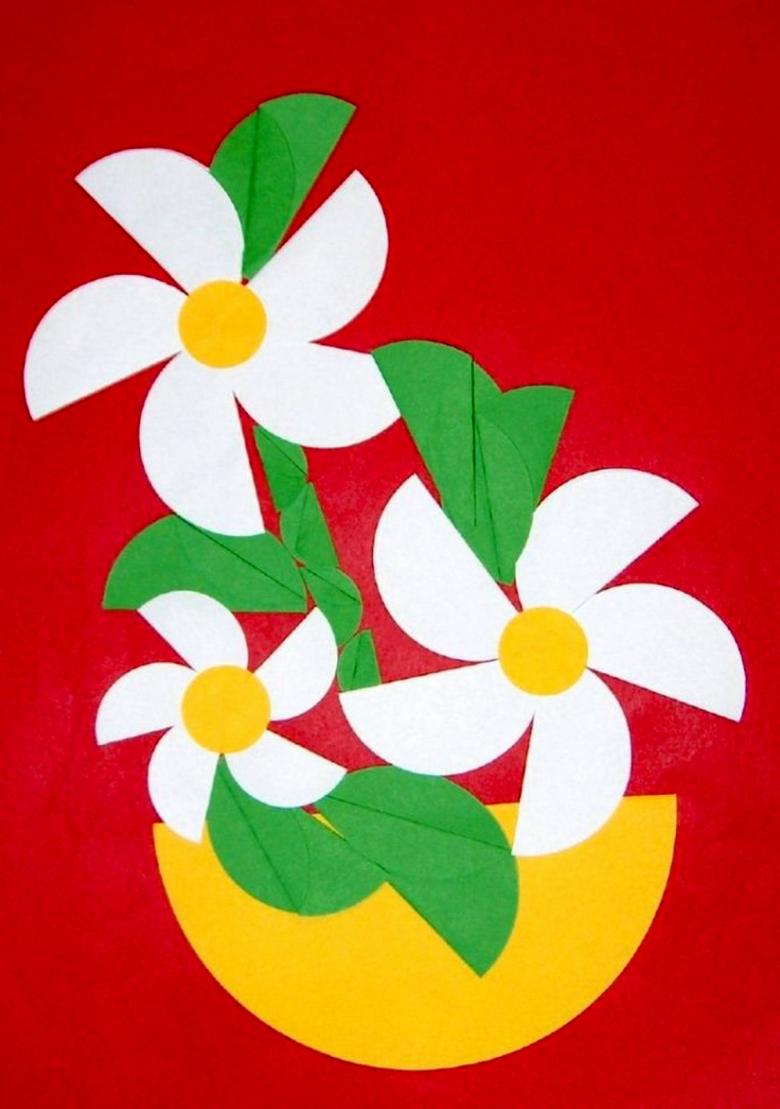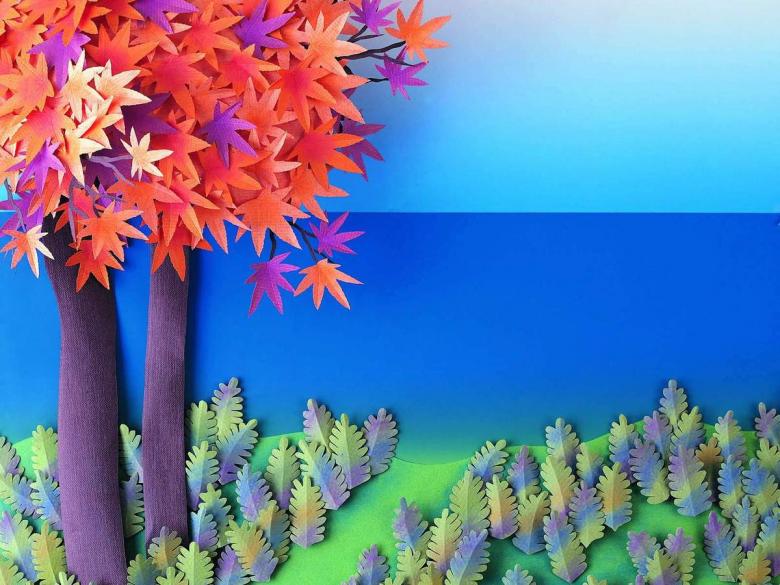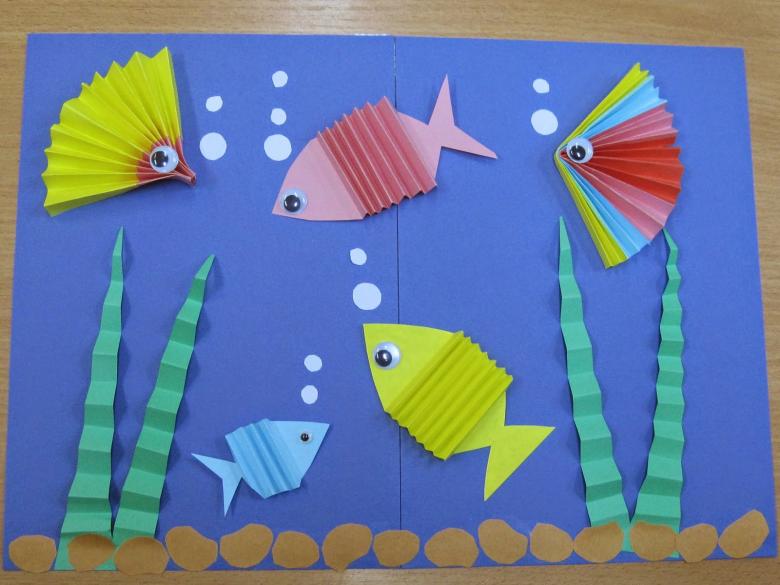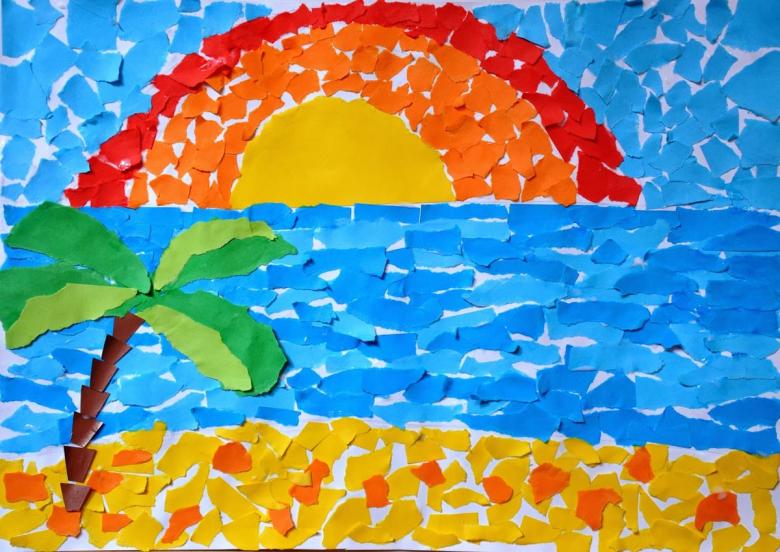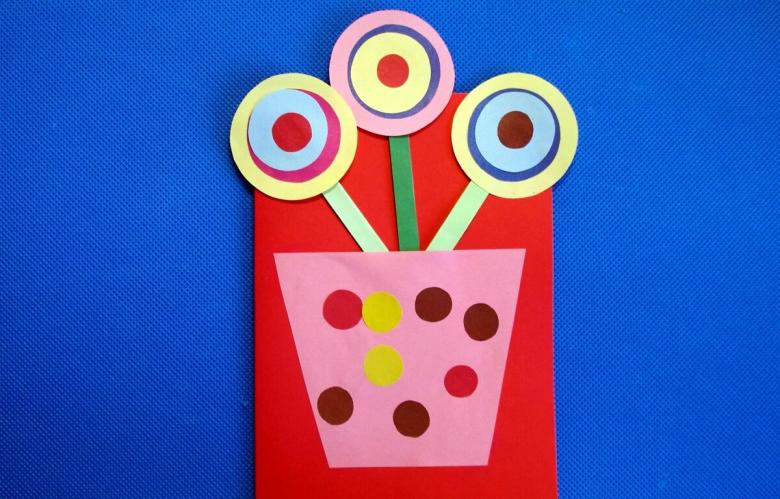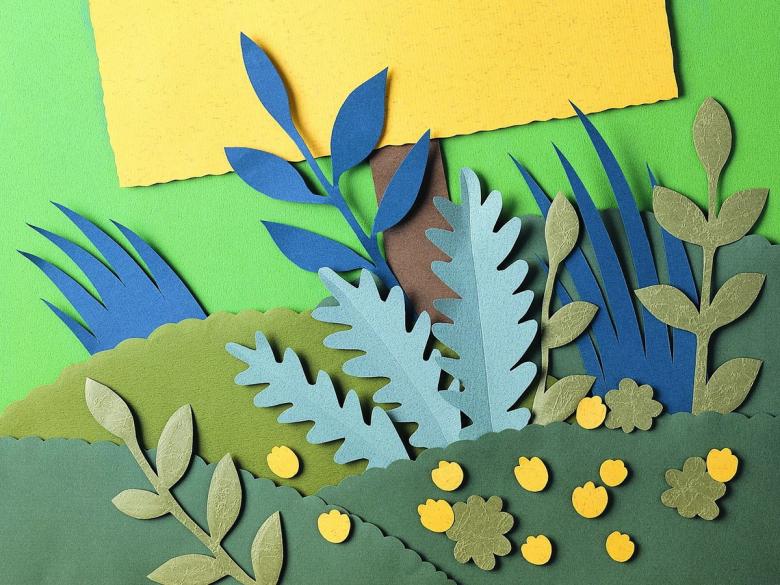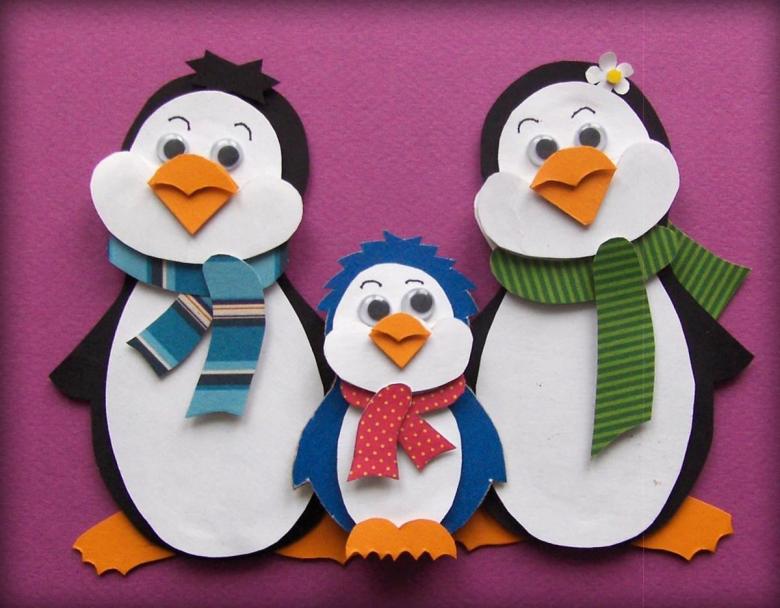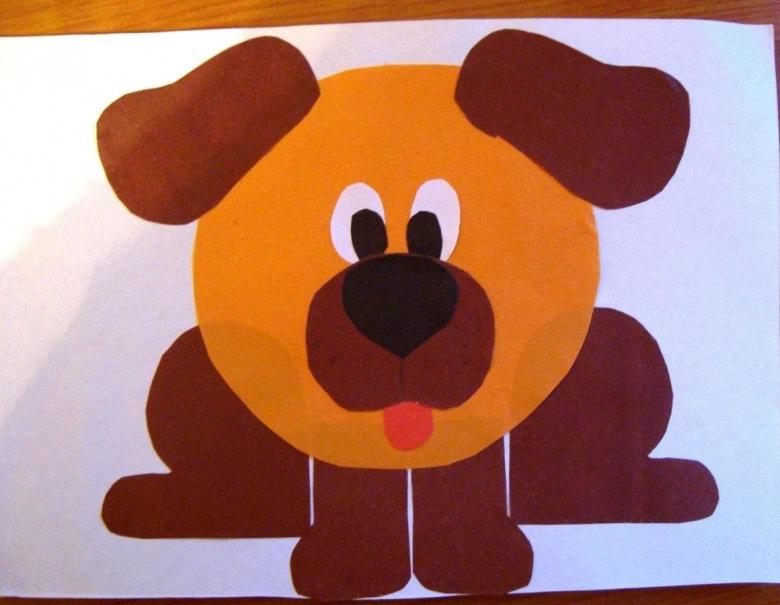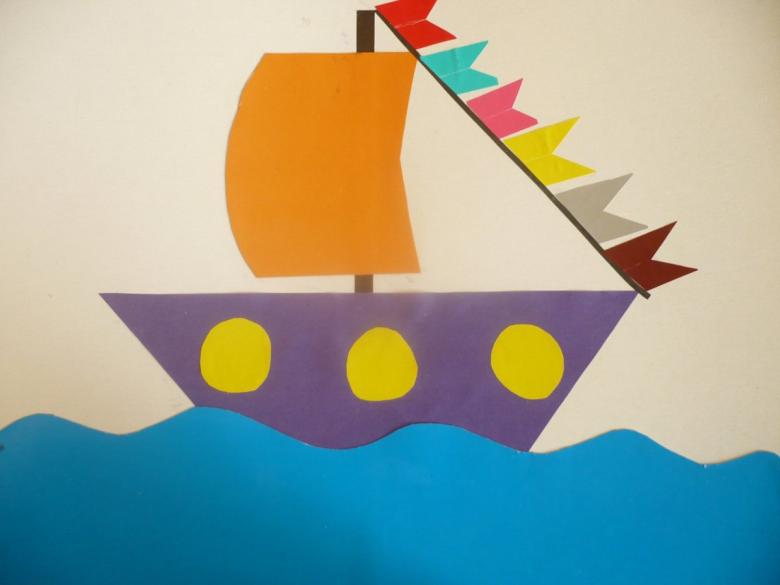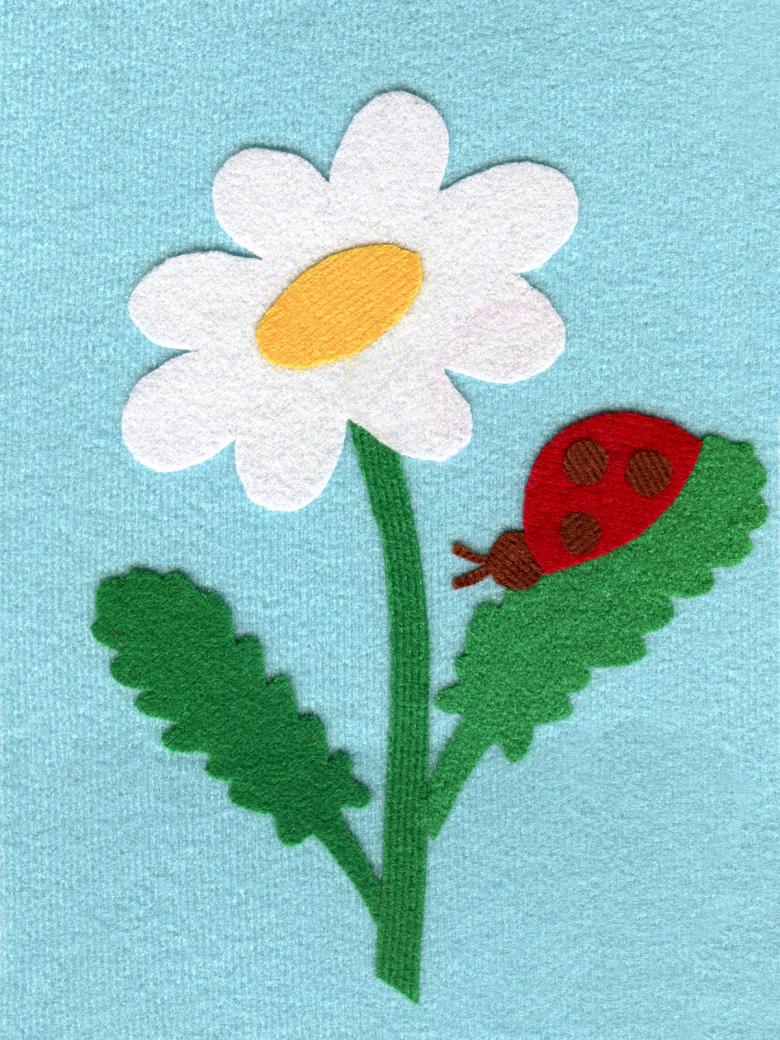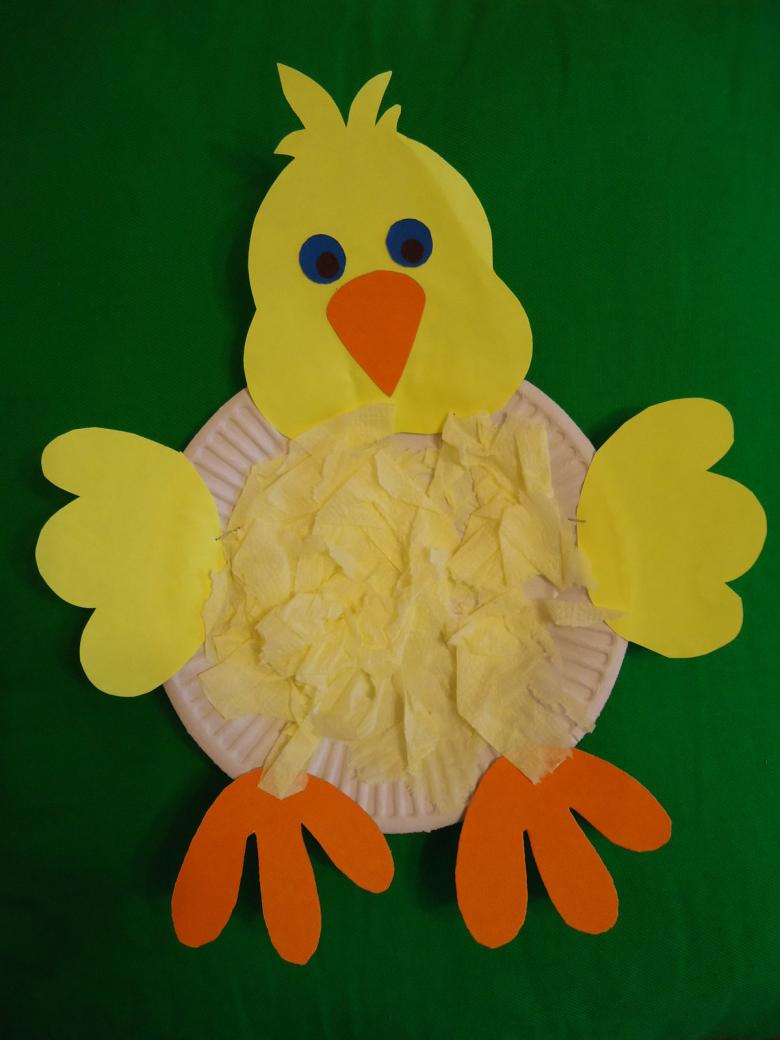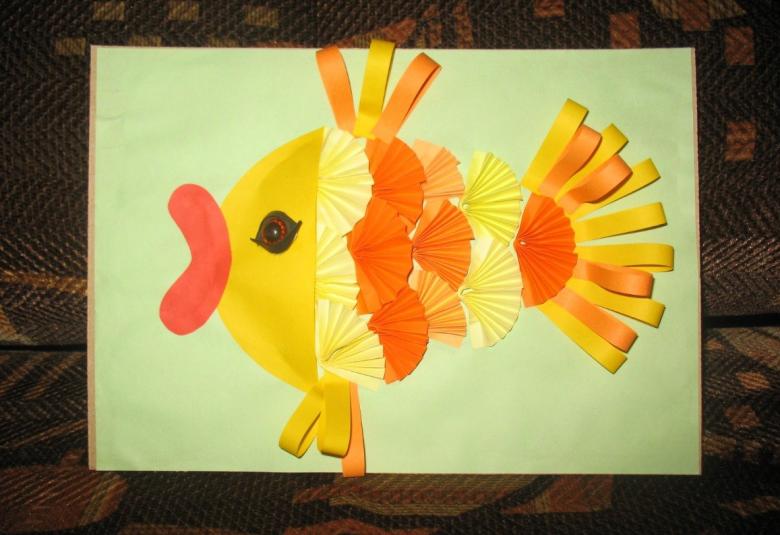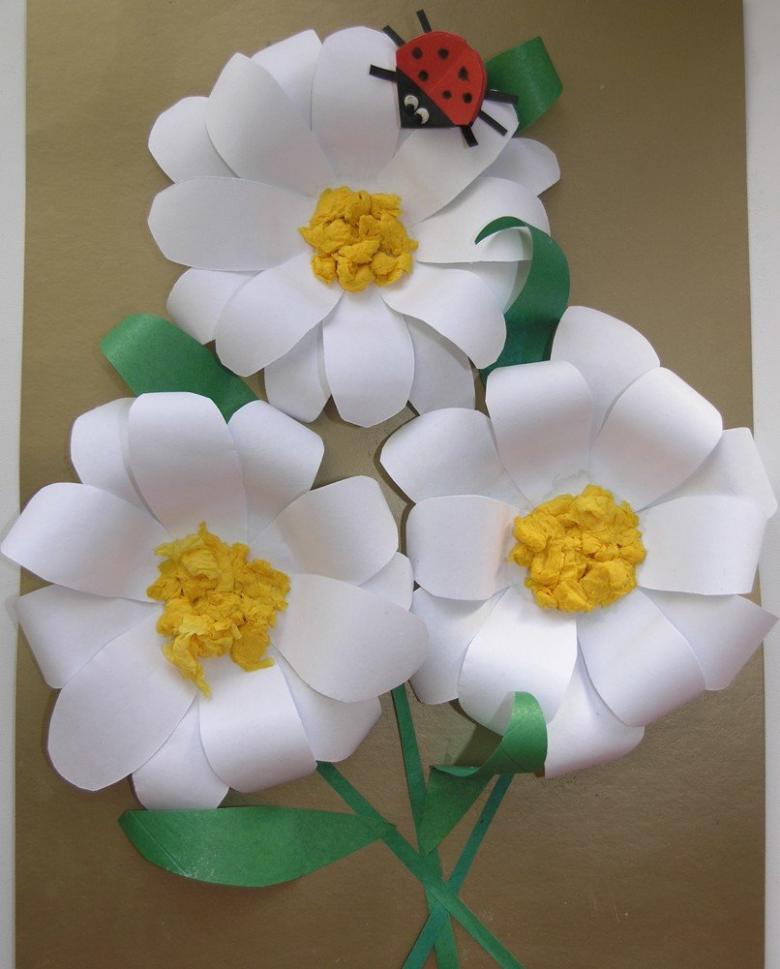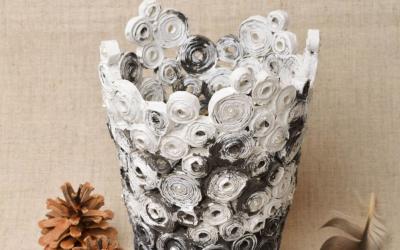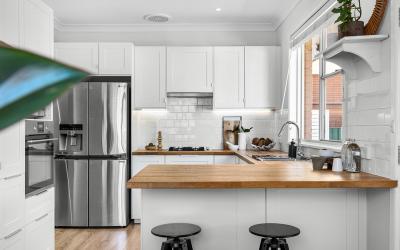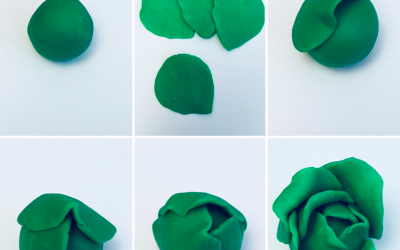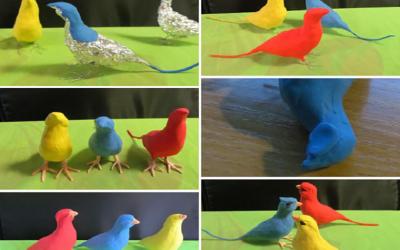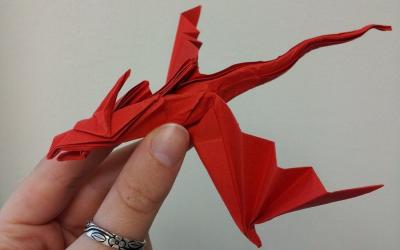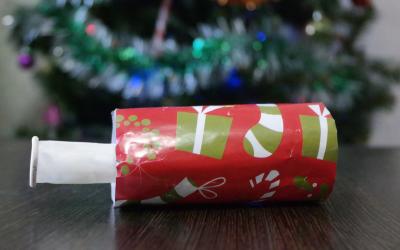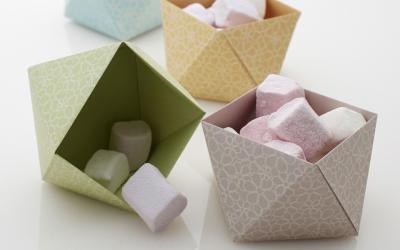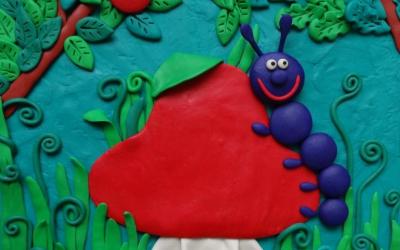Applications of colored paper: how to make simple, beautiful and original applications
Any creative activity feeds a child's imagination, provides a faithful perception of colors and shades, shapes and textures, promotes the development of spatial and full figurative thinking.

A separate column is made of colored paper applique, as kids are taught diligence, perseverance and patience. Despite their apparent simplicity and accessibility, children are very attentive when gluing figures to any base. Learning can start at the age of 2.

What are the benefits of applique for a child?
From the age of 1 year, children watch adults making applications of colored paper. But they themselves are not yet able to repeat complex actions. Although imagination can already develop, a baby remembers what his mother or father does. He compares the colors used, combinations of colors and shapes of objects.

From 2 years old, he or she can independently perform simple tasks of gluing cut out shapes. This develops fine motor skills, thinking processes, the child learns to combine the simple into a complex composition. He tries to express emotions through speech, which promotes rapprochement with parents.

Types of applique
Applique is not easy to classify by type. But it is possible to divide by subject:

Subject Applique.
A relatively simple type accessible to children. The element is cut out of the selected material. It is glued on the basis.
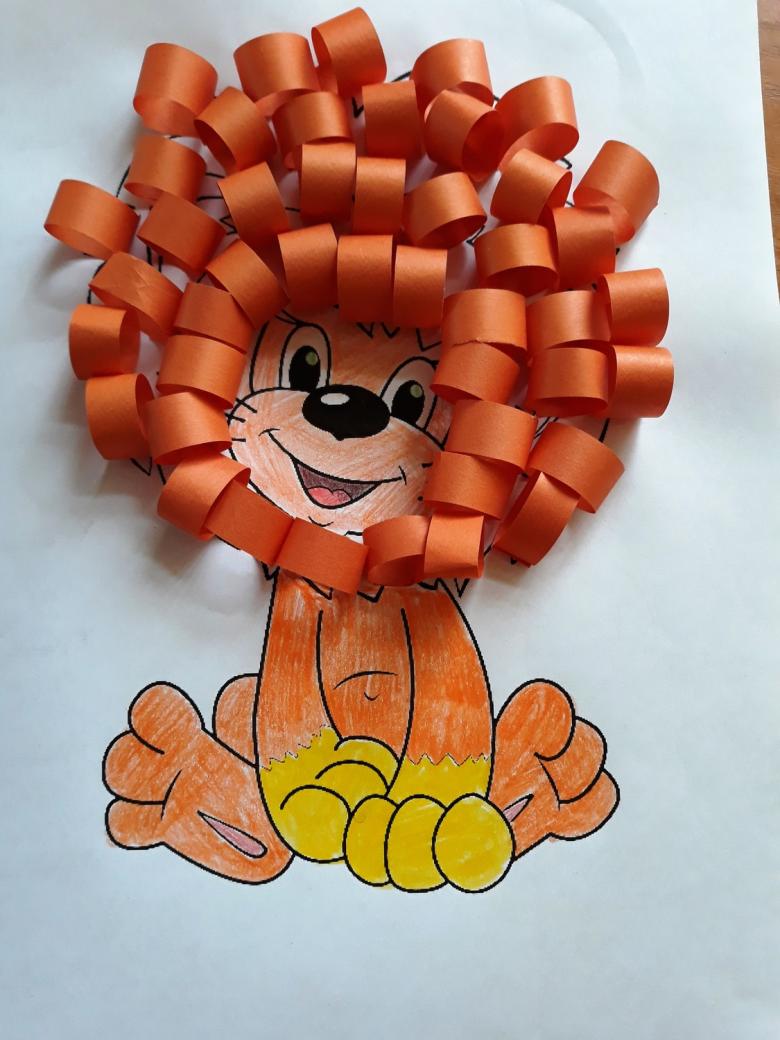
Subject applique
The image of the story appliqué are created not by one but by several links. Based on the background, they form an event or action.

Decorative applique
Made on the basis of a repeating pattern. Thanks to it is decorated thematic album, household items or frames.
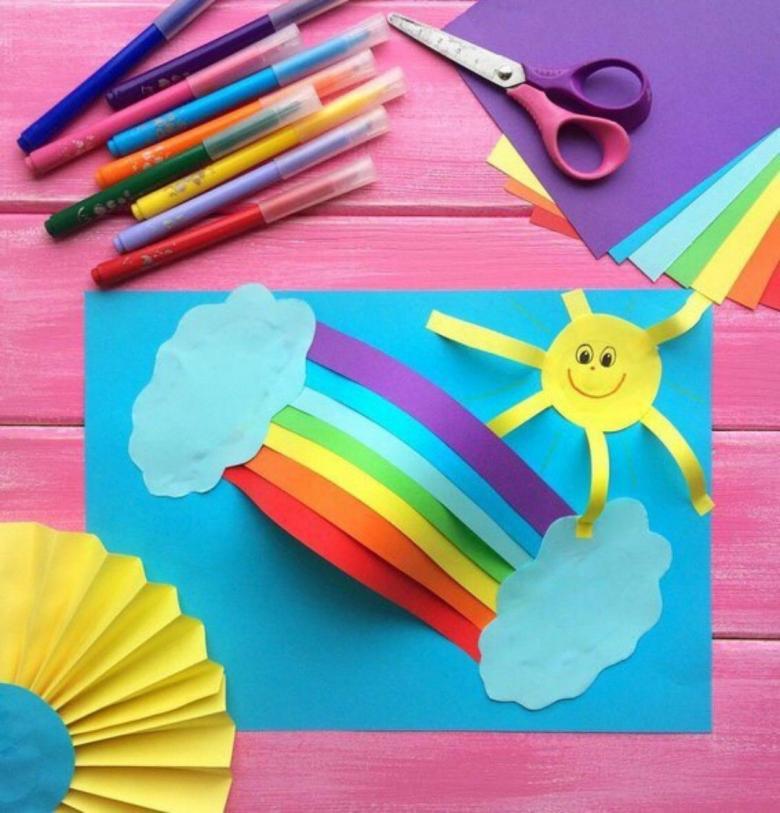
Important: Paper, the main material for applications of any kind. However, the use of other materials is allowed. The author is allowed to be guided by imagination. Often exploited: fabric basis, bark, beads or various colors, woolen threads, seeds, leaves, groats and more.

Still Life Application with a Vase and Fruit
Still life itself is educational for preschool children. But in the form of applique offers an additional intriguing component.

Therefore, still life applique made of colored paper is in demand by educators and teachers. They are trying in every way to influence the rate of development of creative abilities of entrusted students.
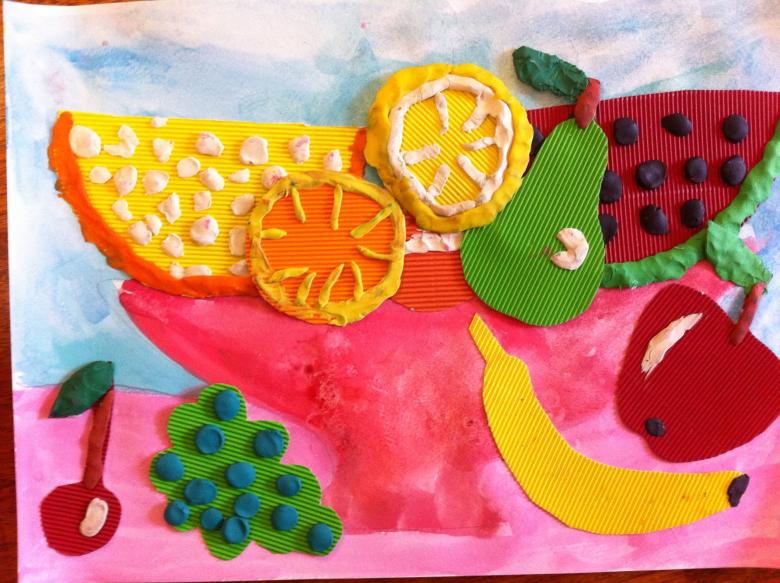
Masters teach children to position objects favorably to partially cover other elements of the composition. Kids are aware of the different techniques of cutting out shapes of the required size. To do this, sometimes it is necessary to fold the workpiece in half. Teachers help to develop neatness in the process of using glue and scissors.

What will be needed for the work:
- Office type paper;
- Some colored coated paper;
- Pencil-shaped glue;
- Suitable scissors;
- A regular pencil.

Stages of doing the work:
- The availability of the basis and all necessary materials, tools is checked;
- The child receives the prepared elements of the applique. He needs to cut out on his own: a vase, an apple, a pear and a watermelon;
- After cutting, the elements are unfolded on the other side;
- The red slice is glued to the green rectangle. Black elements of different sizes are added on top to simulate the seeds of the berry;
- The peel is applied with a pencil. To do this, below the red slice, a thick line is drawn. Watermelon ready;
- A vase of brown color glued on a yellow or blue background, the combined basis is allowed. As an option, the blue color can simulate the presence of the table in the middle of it is imposed vase. Now it seems to stand on a wooden surface covered with a tablecloth. Yellow adds volume to the application. It gives the impression that there is a wall further away;
- A pear and an apple are glued on top of the vase. They should slightly cover the central object, but they don't create an intentional emphasis, because in this composition every detail makes sense;
- The watermelon slice slightly covers the vase, pear, and apple. This gives the impression of a bunch of objects on the table;
- Details are added. The pear and apple are provided with leaves. An attractive ornament is applied to the vase. All the work is done very qualitatively. Even an adult will enjoy looking at such an applique.
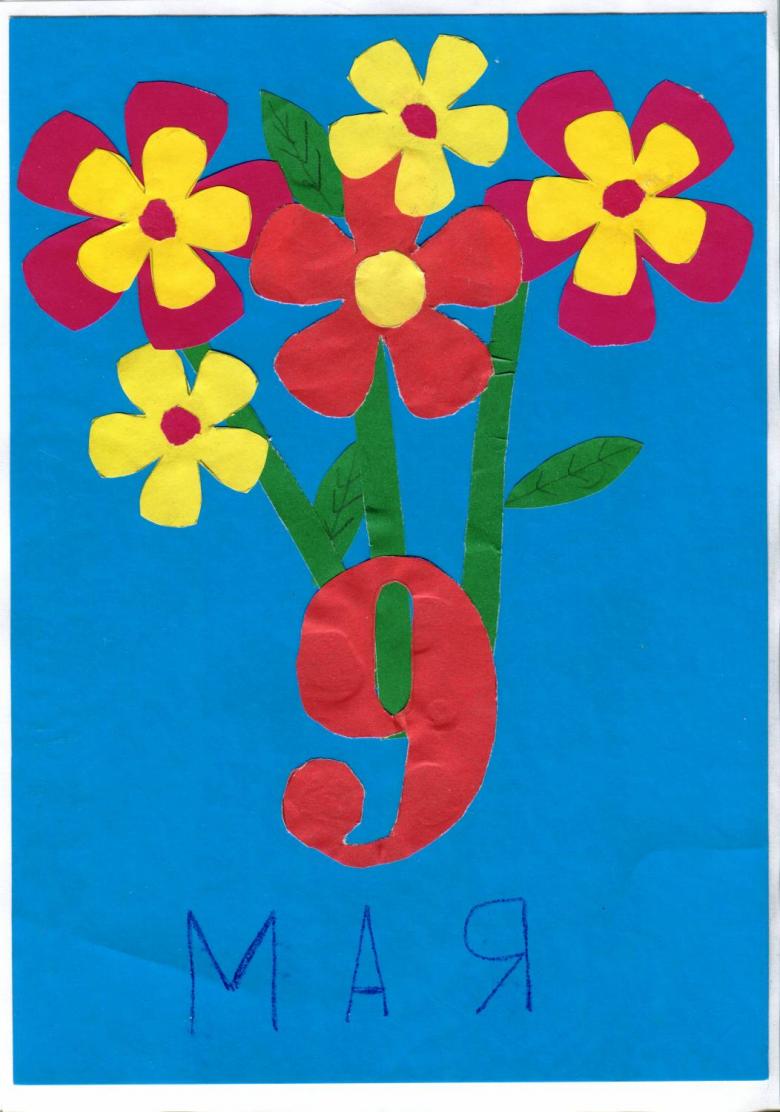
Elephant from colored paper for children
To interest a child, it is necessary to offer an intriguing idea. To do this, it is important to take into account the age and interests of the baby. But the neutral theme of nature, trees, animals, insects is always in demand by the younger generation. They see it with their own eyes, so confidently can convey shapes, colors and features on paper, thanks to the technique of applique.
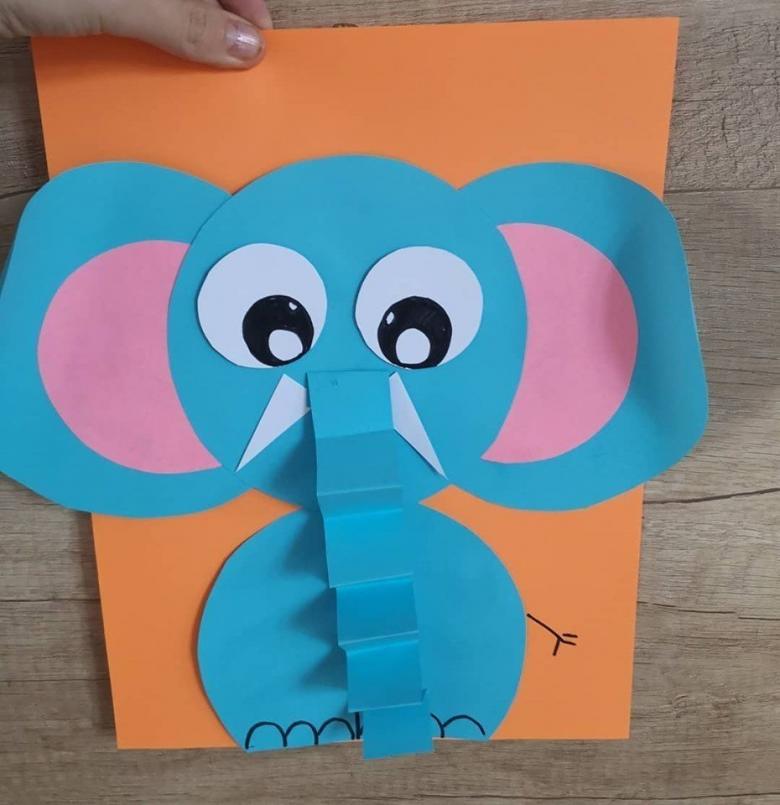
But the elephant children equally, as most adults have seen only on television, maybe even in photographs. Although not excluded a brief encounter during a tourist trip or visit to the zoo, but it is not available to all kids. Therefore, this topic is particularly interesting for the developing mind of a child. It is important to understand where, what and how it is located. Adults need to prepare answers to many questions.

However, colored paper applique for children does not have to be on a theme chosen by an adult. It is better if the kid chooses the theme himself, as this guarantees a particularly great interest in doing the work.

Creating an elephant
It is not necessary to be limited to the elephant itself, because for the development of imagination, the background of the applique is of particular importance. Therefore, prepare an elephant of the appropriate color (for girls - pink, for boys - brown). It is important to explain to children the difference between African and Asian kinds of elephants. Additionally, sand, the sea, a banana tree, some grass, the sun, clouds are depicted.
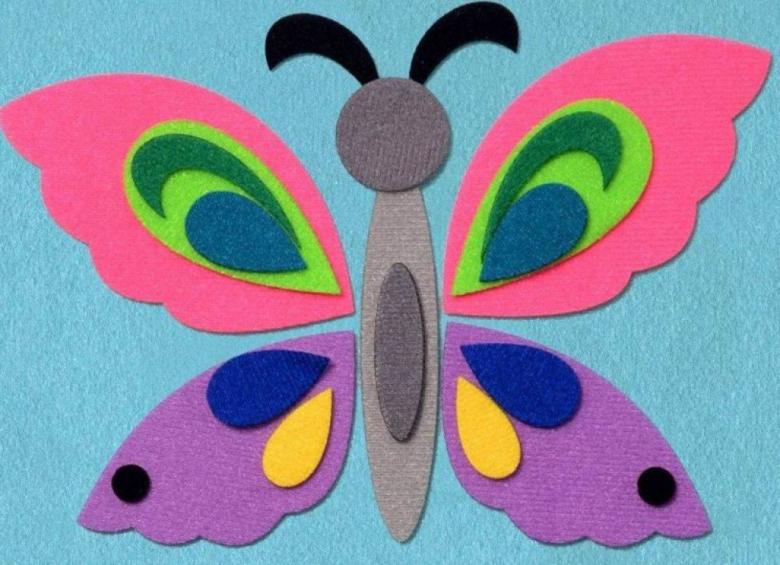
If the child is at least 5-6 years old, it is possible to offer him or her to draw the basis for the cut-out.

Stages of creating an applique:
- The base is glued. Sand is added, on the left side a little sea of blue, in the middle the sun, clouds are evenly distributed;
- Closer to the right side is added a banana tree and the delicious fruit itself. This is necessary to leave room for the elephant;
- An appropriately colored elephant is added to the center on the sand, but it's okay if part of its legs are in the water. This is a large animal it will not drown. The trunk heads toward the bananas. The animal has come to eat the berry and satisfy its hunger, to rinse itself with seawater to get rid of the many parasites;
- Details of the tree, bananas, elephant are added. It is obligatory to glue the grass next to the animal's feet. But it is important to remember that in this application the elephant is the central figure because the emphasis is on him. All the work is ready. You can put it in a sideboard, hang it on a wall or present it to an important person.

Naturally there are many techniques of applique, but for children it is better suited to the most simple and bright options. For them, the main thing is the visual impression, not attention to detail. But accuracy is desirable, so that they can easily identify the image.











